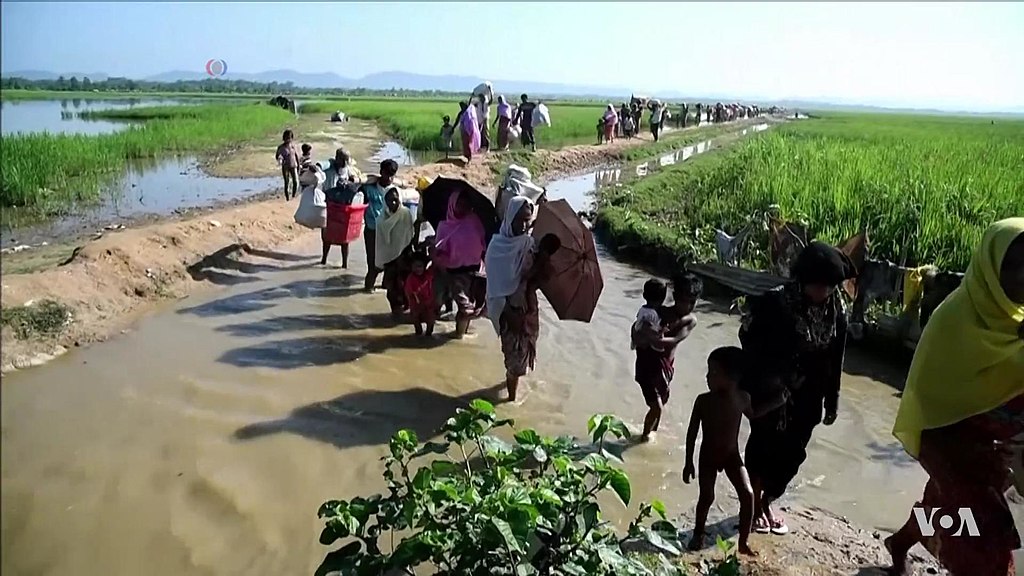
(Zlatica Hoke (VOA) – Screenshot from the source video)
The plight of the Rohingya in Myanmar is widely known but little understood. From August 2017, when the persecution and displacement of hundreds of thousands of Rohingya finally made the front pages, the atrocities meted out against this ancient Muslim minority inside and outside Myanmar have drawn comparison with the Jewish ‘Holocaust’ in Nazi Germany.[1] When images of brutalised bodies, burned villages and traumatised children flooded media outlets, the world’s conscience was pricked. But time has passed. The predicament of the Rohingya has been overshadowed by the more immediate crises in war-torn Ukraine, earthquake stricken Turkey, conflict riven Sudan and in the choppy diplomatic waters of the South China Sea. The case against the Burmese military and radicalised Buddhist monks who conspired with them against the Rohingya, and the appearance of Nobel Peace Prize winner State Counsellor Daw Aung San Suu Kyi (b. 1945) before the International Court of Justice in The Hague in December 2019, charged with orchestrating a ‘genocide against the Rohingya’,[2] have been largely forgotten, or pale beside the brutality of the junta’s reign of terror since the February 2021 coup. With an estimated 1.1m. Rohingya displaced by the violence from their native Rakhine province – a majority living as destitutes in vast camps in Bangladesh – the world cannot overlook the crisis. Moral foreign policy doesn’t forget, or fail to act, when the media circus moves on.
My aim in this Briefing is to set the murder, rape, torture and persecution of the Rohingya in a broad historical, regional, cultural and political context. Not that analysis will help the Rohingya, but accurate reporting may reignite a passionate repudiation of inhumanity.
History and culture
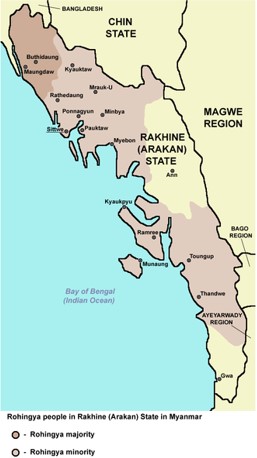
The Rohingya crisis begins to make sense when set in the context of Burma’s conflict riven history and complex cultural profile. External perception of Myanmar as a coherent entity is flawed. Behind the country created by British colonisation in 1824 lies a region bisected by ancient tribes and fiercely loyal people groups. Neither Buddhism nor Burmese[3] are any more than mechnisms of power to create an appearance of coherence. The seven regions and seven states of modern Burma belie the long history of violence and mutual distrust that exists between them. When Burma was granted independence from Britain in 1948, a new country, with a capital in Rangoon, was united by a constitution in which ethnicity was subordinate to nationality and diversity of every kind symbolically fused in the agreement (Panglong I) signed on 12 February 1947 between the Shan, Chin and Kachin and the then Burmese government led by General Aung San (1915-1947), the erstwhile ‘Father of the Nation’ and of Burmese Independence. The Panglong Agreement notwithstanding, eight ethnic groups were formally recognised (Kyaw, 2015) including Rakhine, which itself had seven sub-ethnic groups (mainly in the Arakan region).[4]
The history of Arakan deserves close attention: it is integral to understanding the fate of the Rohingya. Before its invasion and annexation by Burman King Bowdawpaya (1740/1-1819) in 1784, Arakan was a sovereign, independent state. After Independence, Arakan was renamed Rakhine State of the Union of Myanmar, with Sittwe (formerly Akyab) as its state capital. Though a coastal region rich in natural resources, internal conflict and limited central government support over the years, have left Rakhine one of the poorest states in Myanmar. Other physical factors have exacerbated this. The 2000 metre Yoma Mountains form a natural barrier between Rakhine and the rest of the country. The Naaf river separates the northwest of the region from the second-largest city in neighboring Bangladesh, Chattogram. In short, Rakhine has been, and remains, on the periphery of Myanmar; to many, inside and outside the country it has been and is separate and separatist, to a troubling degree disconnected culturally, religiously and politically.
The origin of ‘Arakan’ and ‘Rakhine’ is revealing. ‘Arakan’ is traceable to Arabic and Persia. Early Buddhist missionaries – like other travellers and later geographers – gave it another name, ‘Rekha Pura’ (Lit. Radiant town). Muslim settlers called Arakan ‘Rovingaw’, and gave themselves the name ‘Rohinga’, or ‘natives of Arakan’. In the 18th century, the local Chakma, Sak and other tribal groups called the area ‘Roang.’ Thereafter, Muslims settled on ‘Rohang’ or ‘Arakan’ for the region and and ‘Rohingya’ or natives of ‘Rohang’ for their ethnicity. Local Burmans call the area ‘Rakhine Pye’ and themselves ‘Rakhine’.[5] This evolving nomenclature is symbolic of the fluid identity and fluctuating impact of outsiders on Rakhine State. Closer study of the history of the region confirms this.
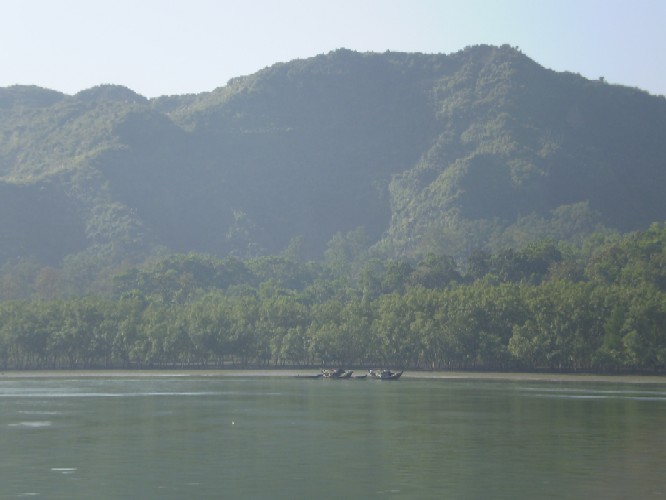
(Kirtinasha (Nazrul))
Local historians claim Muslims first reached Arakan in the 8th century. By the 15th century, the distinctive Muslim identity of the Arakanese began to consolidate,[6] but Muslim settlers were not culturally homogeneous. Early Moorish, Arab, and Persian traders, who arrived from the 9th century, spoke a noticeably different language to those who arrived in the 15th century. Likewise, migrants from Afghanistan, Persia, Turkey, North India, and the Arabian Peninsula added to the rich and complex reality of Arakan’s Muslim language and identity. A mixture of Persian, Urdu, Pushtu, Arakanese and Bengali has over the centuries created a distinct dialect in the region, with Muslims who arrived in large numbers in the 12th and 13th centuries securing the region’s religious identity. A second wave in the 15th century reconfirmed this until the region was conquered in the 18th century by King Bowdawpaya and integrated politically into the Burman Kingdom. The Government of Myanmar has over the years adopted a pragmatic approach to the region’s history and ethnicity, categorising Arakanese Muslims as descendants of either 15th and 16th century Bengali who migrated there from the Chittagong region of Bangladesh (during the Mrauk-U Dynasty), or of the refugees who fled the Mughal invasion of Bengal in 1575.[7]
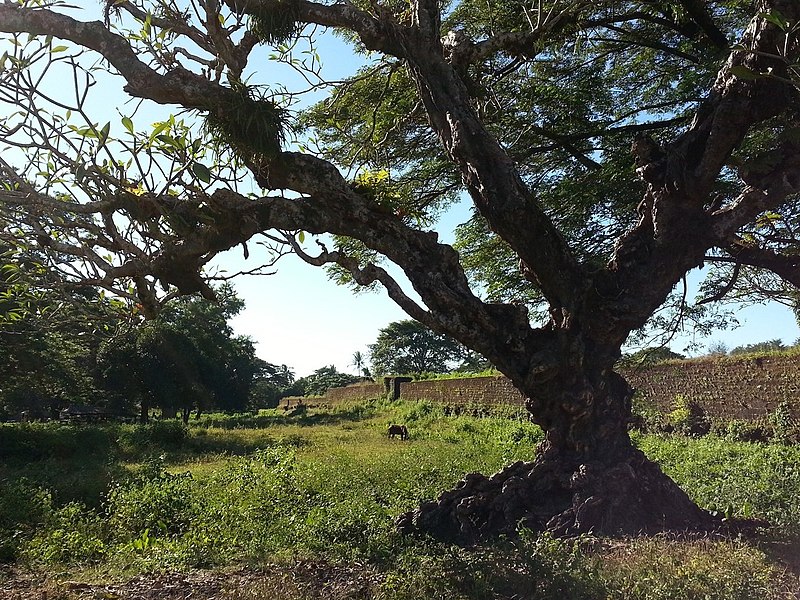
Apart from the Rohingya in Rakhine, there are a number of other Burmese Muslim groups in Myanmar; notably, the Chinese-Muslim Panthay (mostly in the North), Shan Muslims (historically from Shan State) and the ‘Kamein’ or ethnic Burmese who are also Muslim. Most of these groups speak Burmese, are viewed as ‘sons of the soil’, and are proud of their Muslim culture and heritage.[8] Crucially, deep-seated animosity and mutual suspicion exist between the Rohingya and these other Muslim communities; not least, because the latter are characteristically more patriotic, educated and integrated in the country’s political and socio-economic life. They are also dispersed across Myanmar, while the Rohingya, until scattered by the recent persecution, have remained concentrated in Rakhine State. The simple fact is, the atrocities suffered by the Rohingya in the last five years, far from creating ethnic conflict in Myanmar, confirmed it. The depth of the historic divisions between the country’s Muslim communities was played out publically in the low-key reaction of fellow Muslims to Rohingya suffering. The Government of Myanmar took advantage of this, caricaturing and castigating the Rohingya as separatist insurgents or as dangerously disloyal Bangladeshi outsiders – not, that is, as the Rohingya see and present themselves, viz. a poor, marginalised, and endangered Muslim minority.
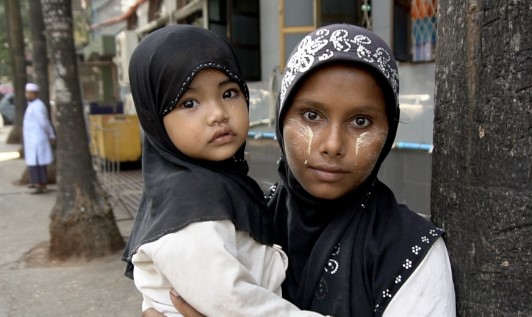
One final chapter in the tortured history of the Rohingya needs to be noted, before looking at what has happened in the last five years. As we have begun to see, the oppression of the Rohingya traces its roots to the late-18th century annexation of Rakhine by the Burmese Kingdom. Resentment lingered. In World War II, though the Burmese sided with Japan the Rohingya backed Britain. For this, the Rohingya suffered greatly during Japan’s occupation of Rakhine State. An estimated 100,000 Rohingya were killed, many more fled. Nationalist animus towards the Rohingya intensified: their exclusion from Burma was broadly touted. After Independence (1948) and the 1962 military coup, the fate of the Rohingya was sealed. The 1974 Constitution withdrew full citizenship, and the right to protection, from the Rohingya. Operation ‘Nagamin’, to drive out the Rohingya from Burma, began. Soon after, more than 250,000 Rohingya crossed the river Naf as refugees to Cox’s Bazar, Bangladesh. To many observers recent events were written into the history and cultural psyche of Burma many years ago.

Oppression of the Rohingya and suppression of their rights in Myanmar are, then, not new. In 1982, a new citizenship law further weakened the Rohingya’s right to reside as citizens in Myanmar, effectively rendering them stateless. Over time, international criticism of this policy led to its modification. In 1995, the Rohingya were assigned ‘White Cards’ to denote their non-national status. Opposition to this from Buddhist monks and nationalist groups led to the suspension of ‘White Cards’ and official consignment of the Rohingya to the status of ‘foreigners’. After 9/11, Burma’s Muslims in their entirety became objects of hatred and suspicion. Nationalist protests erupted across Myanmar. Intra-Buddhist debates inside and outside the country, recategorised Myanmar’s Muslims, including the Rohingya, as enemies of the state. Inside the country, the release of Daw Aung San Suu Kyi and the national election in 2015 raised Rohingya hopes of reintegration in a newly inclusive Myanmar. These hopes were dashed in August 2017 when a sustained military operation against the Rohingya killed thousands and drove more than a million to take refuge in Bangladesh and other border regions of Myanmar. Though history may act to to legitimise this brutality, morality cannot fail to register the atrocities committed.
So what of internal and external perception and reception of the brutal treatment of the Rohingya in Myanmar? Much might be said. Four issues stand out for particular mention.
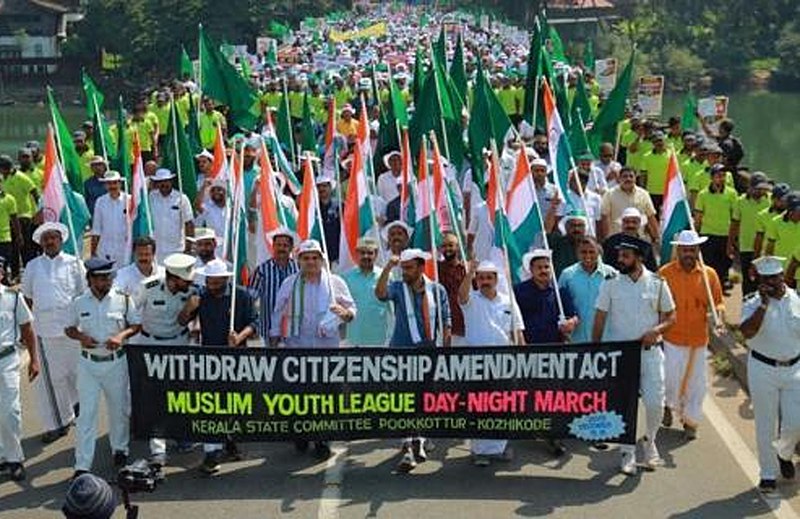
First, as a result of the violence in Myanmar, the Rohingya have become a dispersed, active, conscientized community of protest. Rohingya are now found in growing numbers not only in Bangladesh, Thailand and Pakistan, but also in Saudi Arabia, Malaysia and the UAE. So, Rohingya identity is no longer primarily geographic. Persecution has crushed and scattered them. Expatriate Rohingya communuities try to tell their tale of sorrow and woe to the rest of the world. In countries as far flung as Germany and South Africa, the UK, Japan and India, ‘Free Rohingya’ coalitions can be found. Organized protest prompted the Canadian Parliament to designate recent atrocities ‘genocide.’ Similar initiatives have begun in socially conscientious countries like Denmark, Norway and Australia. However, to the consterntion of sympathisers, ‘Free Rohingya’ projects have been evicerated by unclear aims, internal conflict, poor leadership, financial mismanagement and personality clashes. Unity in suffering has not created a unity of vision and purpose.
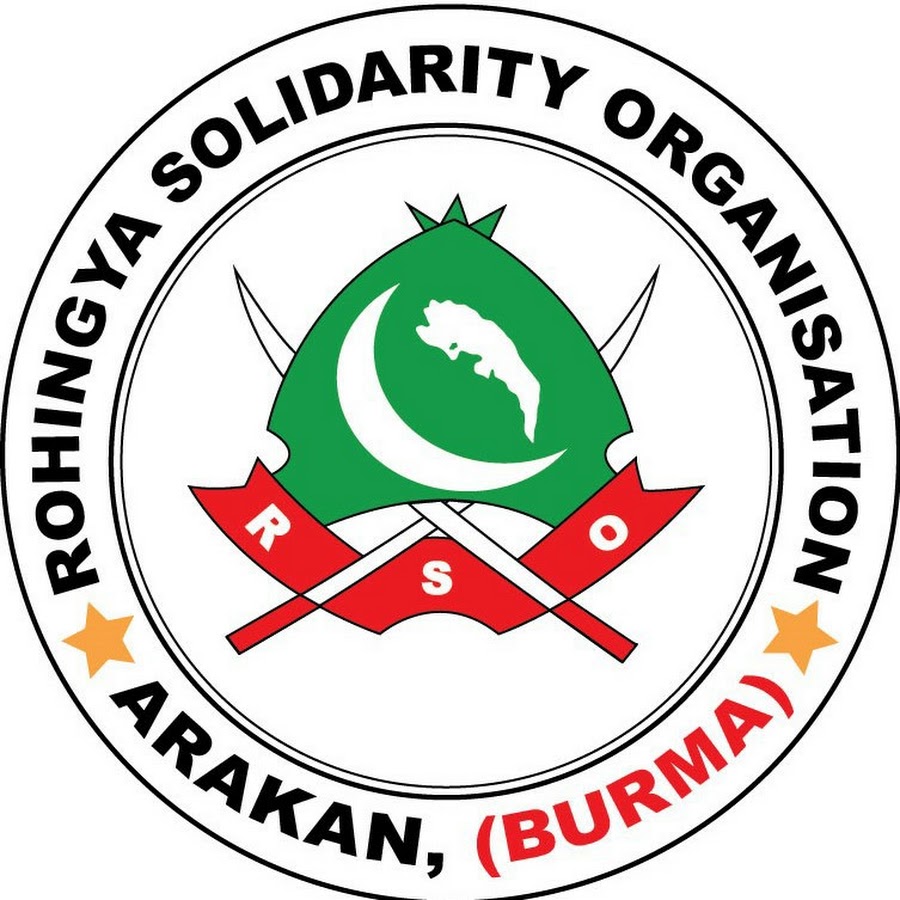
Second, in contast to the diffuse nature of Rohingya protests outside Myanmar, many of the those who have remained in Myanmar have been drawn into civilian and military alliances. Some of the latter have attacked government forces. Indigenous initiatives have helped to conscientize and mobilize Rohingya thought and action. The Arakan Rohingya National Organization (ARNO), the Arakan Rohingya Salvation Army (ARSA; formerly Harakah al-Yaqin), and the Rohingya Solidarity Organization (RSO) are all associated with violence against the military.[9] On 25 August 2017, ARSA troops attacked 30 security posts on the border with Bangladesh. A dozen Burmese police officers and one Tatmadaw soldier were killed. Brutal reprisals followed. This led to the large-scale exodus of the Rohingya. ARSA became a designated terrorist organization in Myanmar and Malaysia. Links to Al-Qaeda, ISIS and the Taliban were widely mooted. Few doubt military supplies came from Saudi Arabia, Malaysia and Pakistan.[10]
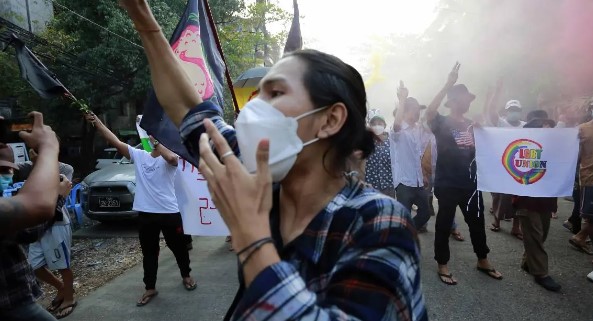
Third, the plight and protests of the Rohingya gained new global prominence in 2020 when Gambia charged the Myanmar government and State Counsellor Aung San Suu Kyi with ‘crimes against humanity’ and ‘genocide’. The case is still before the International Court of Justice at The Hague: it may take years to resolve. A landmark case, the protracted nature of Myanmar’s ambivalent – if not also violent – treatment of the Rohingya means the Rohingya refugee crisis on Myanmar’s border with Thailand, Bangladesh, India and China is set to last for years. Security analysts fear that, as elsewhere, Rohingya refugee camps will be breeding grounds of disaffection, radicalization and violent insurgency. Much publicized campaigns to increase sanctions on Myanmar have compromised Myanmar and its near neighbours’ capacity to benefit economically from trade, tourism and lucrative cultural celebrations. Increasing violence against – and between – Myanmar’s Muslim communities (i.e. recent attacks on the Kamein) has raised fears of an all-out civil war in Myanmar and highlighted to many the Junta’s disregard for, or ineptitude handling, ethnic violence, cultural diversity and peace negotiations.
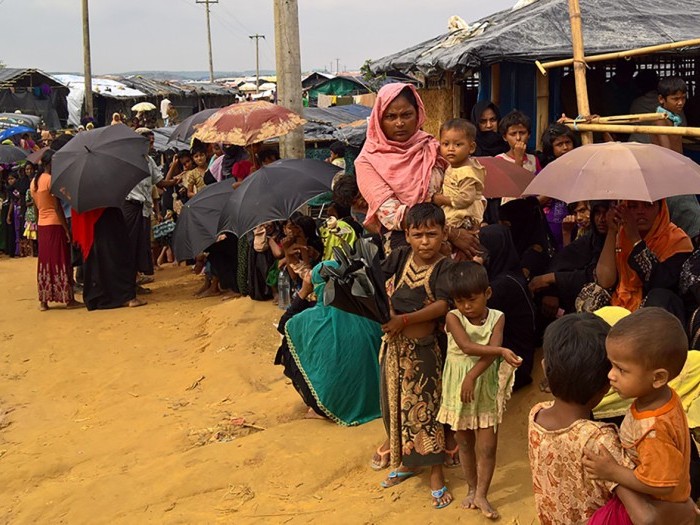
Fourth, since the mass exodus of Rohingya from Myanmar in August 2017, the Government of Bangladesh and the UNHCR have been working on a project to swiftly and/or voluntarily repatriate Rohingya Refugees or ‘Forcibly Displaced Myanmar Nationals’ (FDMNs).[11] As before, this initiative is doomed to fail because of resistance from the Burmese military. Unsurprisingly, after decades of disenfranchisement and discrimination, the Rohingya have little desire to return without their rights as citizens being confirmed. The February 2021 coup d’état added to fear that Myanmar would not be a safe place to settle. With the camps overcrowded and volatile, the Bangladesh government has begun moving refugees to their off-shore islands and sought UN (and Chinese) support to repatriate Rohingya with their security implausibly safeguarded by the Myanmar government.[12]
Passionate arguments – sometimes turning violent – about the future of the Rohingya have raged within their own ranks. Rohingya in refugee camps have tended to be less ready to provoke the Junta’s wrath, fearing bitter reprisals. Their ‘freedom fighter’ compatriots are more ready to confront the regime.[13] This dischord in Rohingya ranks has led to the murder of leaders promoting repatriation and the targeting of Muslim groups by ARSA and its recently formed off-shoot Islami Mahaz [IM].[14] In September 2021, for example, ARSA operatives assassinated Mohammad Mohib Ullah, chairman of the Arakan Rohingya Society for Peace and Human Rights (ARSPH). In response, the so-called ‘going home’ movement, led by Rohingya leader Mohib Ullah, vowed (to many observers over-ambitiously[15]) the safe return of his people to Myanmar.
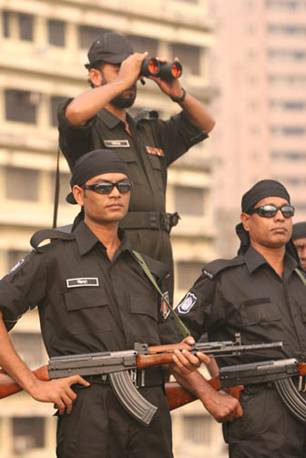
Since August 2017, confrontations among groups promoting Rohingya rights have become more common, with government agencies adopting a ‘divide and conquer’ strategy in their readiness to collaborate with some Rohingya factions. In-fighting threatens the credibility of the Rohingya cause. In one incident, the Rohingya Solidarity Organization (RSO) attacked an ARSA post in ‘no man’s land’ between Bangladesh and Myanmar, leaving one Rohingya dead and hundreds homeless and exposed to further threats of violence. As a consequence, many moved to makeshift camps in Myanmar and Bangladesh. Crucially, ARSA claim Bangladesh’s elite Rapid Action Battalion (RAB) supported the attack, as they had months before in another lethal attack.
As intimated already, however the Rohingya become refugees the vast camps they fill have become hubs for organized crime and militantcy; especially, for gang violence, targeted killings, and the trafficking of drugs, firearms, and counterfeit currency.[16] The poor management and insecurity of these camps has raised increased concern for human rights activists and NGOs. In 2022, more than 1,000 Rohingya were arrested for murder, drug dealing and the marketing of illegal weapons. To Human Rights groups, some of the blame for this lies with the Bangladeshi Armed Police Battalion (APBn) who are accused of harassment, wrongful detention and accepting bribes to release offenders. In August 2022, after two refugee leaders were killed, the APBn launched ‘Operation Root Out’ to address the spread of criminal activity in Rohingya camps.[17] In reality, criminal activity is a symptom of a larger problem; namely, the profound disaffection of displaced Rohingya and the failure of the international community to put sufficient pressure on the Burmese military to stop their violence against the Rohingya and to support their speedy, safe and legally sustained, repatriation.
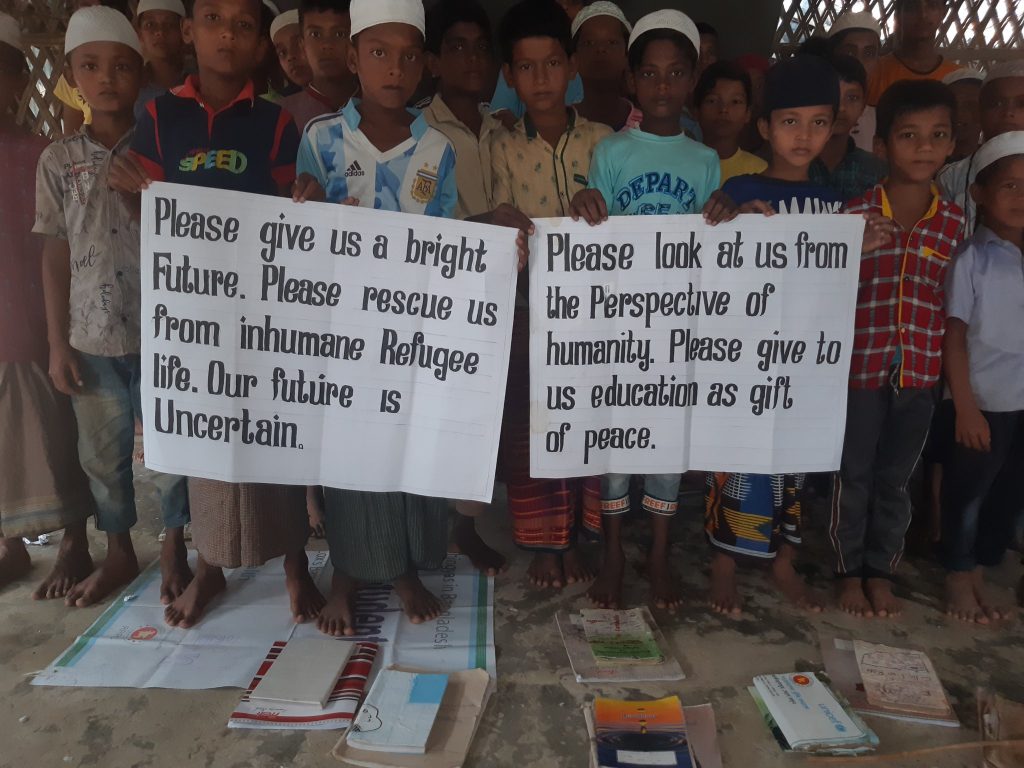
The long-term implications of the inhuman treatment of the Rohingya by the Myanmar military and nationalist Buddhist monks remain to be seen. Flight from Rakhine has left many Rohingya displaced and discriminated against in congested camps in SE Bangladesh. Indeed, Bangladesh has born the brunt of the Rohingya crisis since the early 1970s and is ill-equipped and under-resourced to respond.[18] The present situation cannot continue. The Bangladeshi authorities fear Bangladesh will succomb to the criminality that plagues the Rohingya camps. Locals are increasingly resistant to Rohingya protests. Local leaders experience firsthand lack of funding to meet the refugees’ needs. In 2022, the Joint Response Plan for the Rohingya humanitarian crisis projected a $881m. package of need of which half has been forthcoming. However problematic, responsible, equitable repatriation is still the prefered solution for a majority of Rohingya and their supporters. Time will tell if this ideal is ever realised.
Krishna Kumar Saha – Research Associate[19]
[1] On the Rohingya crisis in general, see Ahmed, K. and H. Mohiuddin, The Rohingya Crisis: Analyses, Responses, and Peacebuilding Avenues (Lexington Books, 2019); Bari, M. A., The Rohingya Crisis: A People Facing Extinction (Kube Publishing, 2018); Hanan Beyene, ‘Never Again: Analysis of the Rohingya Crisis and the Role of Religion in Conflict’ (2021): https://jewlscholar.mtsu.edu/server/api/core/bitstreams/41708461-4819-4fbe-9904-c51a27dc1622/content.
[2] On this, see Siddiquee, M. A. (2020) ‘The portrayal of the Rohingya genocide and refugee crisis in the age of post-truth politics’, Asian Journal of Comparative Politics 5.2 (2020): 89-103: doi: 10.1177/2057891119864454; Tinmaing, R. and A. Kanji, ‘Resisting the Rohingya Genocide: From Pity to Solidarity, Inside and Beyond the ICJ’ (2020): https://www.reuters.com/article/us-myanmar-rohingya-soldiers-exclusive/exclusive-myanmar.
[3] The official language of Myanmar.
[4] Cf. Kumar Mohajan, H., ‘History of Rakhine State and the Origin of the Rohingya Muslims’, Indonesian Journal of Southeast Asian Studies 2.1 (2018): 19-46; Mohiuddin, H., ‘Rohingya diaspora and leadership crisis overseas’, Project: Rohingya diaspora (June 2021).
[5] On this, Kudrat-E-khuda, ‘The impacts and challenges to host country Bangladesh due to sheltering the Rohingya refugees’, Cogent Social Sciences 6.1 (2020): 1-16: doi: 10.1080/23311886.2020.1770943.
[6] Cf. Kipgen, N., ‘The Rohingya Crisis: The Centrality of Identity and Citizenship’, Journal of Muslim Minority Affairs 39 (February, 2019): 1-14: doi: 10.1080/13602004.2019.1575019.
[7] On this generally, Harvard Divinity School, ed., Islam in Myanmar: Religion and Public Life (2022): https://rpl.hds.harvard.edu/faq/islam-myanmar.
[8] On this, see also Hossain, M.A, A.K.M.A. Ullah and M. Mohiuddin, ‘Rohingya refugees in the pandemic: Crisis and policy responses’, Global Policy (October 2022): 1-9: doi: 10.1111/1758-5899.13156.
[9] Cf. Rahman, A., ‘Rohingya settlement on Bangladesh-Myanmar border torched amid fighting’, Benar News (18 January 2023): https://www.rfa.org/english/news/myanmar/rohingaycampfighting-01182023153549.html.
[10] Cf. Davis, A., ‘Foreign support gives Rohingya militants a lethal edge’, Asia Times (August 2017): https://asiatimes.com/2017/08/foreign-support-gives-rohingya-militants-lethal-edge.
[11] Cf. Islam, M. R. and U. Wara, ‘Conflict Potential of the Rohingya People in Bangladesh and Beyond’, Journal of ASEAN Studies 10.1 (2022): 107-127. doi: 10.21512/jas.v10i1.8215.
[12] On this, see also Brees, I., Livelihoods, Integration & Transnationalism in a Protracted Refugee Situation Case Study : Burmese Refugees in Thailand (Ghent University, 2009); Mallick, A. H., ‘Rohingya Refugee Repatriation from Bangladesh: A Far Cry from Reality’, Journal of Asian Security and International Affairs, 7.2 (2020): 202-226: doi: 10.1177/2347797020938983;
[13] Kamruzzaman, P., ‘A Critical Analysis of the Conference on Sustaining Support for the Rohingya Refugees’, Journal of Developing Societies 38.2 (2022): 198-223. doi: 10.1177/0169796X221088339/ASSET/IMAGES/LARGE/10.1177_0169796X221088339-FIG2.JPEG.
[14] NB. Some claim the ARSA killed six teachers and students at an Islamic madrasa (seminary) controlled by the IM under the leadership of Maulvi Selim Ullah.
[15] Cf. Roul, A., ‘Security Risks Rise in Rohingya Refugee Camps on the Myanmar-Bangladeshi Border’, Terrorism Monitor [The Jamestown Foundation], 21.1 (2023): https:// https://jamestown.org/program/security-risks-rise-in-rohingya-refugee-camps-on-the-myanmar-bangladeshi-border.
[16] Cf. BNI, ‘One dead after Rohingya insurgents clash at Bangladesh border’, Mizzima (21 January 2023): https://www.bnionline.net/en/news/one-dead-after-rohingya-insurgents-clash-bangladesh-border.
[17] Cf. Bdnews24, ‘Fire ravages 29 houses in Cox’s Bazar Rohingya camp’ (18 January 2018): https://bdnews24.com/bangladesh/2022/01/18/fire-ravages-29-.
[18] Cf. Mohsin, A.,‘Caught between the nation and the state: Voices of Rohingya refugee women in Bangladesh’, Asian Journal of Comparative Politics 5.2 (2020): 144-157: doi: 10.1177/2057891119874882.
[19] The writer is Assistant Professor in the Department of Public Administration, Comilla University, Bangladesh, a Research Associate of Oxford House (www.oxfordhouseresearch.com) and soon to complete doctoral studies at the University of Ghent, Belgium.
